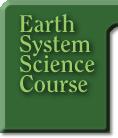PBL
Model
Problem-Based Learning (PBL) is an instructional
methodology that uses real-world contexts for in-depth investigations
of a subject matter. PBL activities start with an ill-structured
problem that serves as a springboard to team engagement.
In this course, ill-structured problems are included in scenarios and
situations focused around environmental events. The PBL
scenarios and situations contain complex issues, conflicts, puzzles,
decisions, or circumstances from real-world experiences that require
both basic skills and inquiry, information gathering, and reflection.
In this course, the PBL environments should raise the following
questions:
- What do you
know?
- What is the
evidence
- What is the
argument that interprets the evidence?
- Are there
alternative explanations or better ways of explaining the
situation or solving the problem?
During this
course, you will use the PBL Model below to assess what is known, to
answer questions, and then to analyze various options before
presenting a recommendation or solution.
- Read and analyze the
scenario and situation.
Check your understanding of the scenario. Don't be tempted to start
thinking about potential solutions or to start looking for
information. You will be more effective in addressing complex
scenarios by following Steps 1 through 7.
List hypotheses, ideas,
or hunches. You
will usually have some theories or hypotheses about the cause of the
problem or ideas about how to solve the problem. These need to be
listed; they will be supported or refuted as your investigation
proceeds. You will also list many alternative conceptions that need to
be addressed.
List what is known.
If needed, print a copy of the scenario and situation and move away
from the computer. Make a list of everything you know. You do not need
to conduct any research at this point. Just draw from your prior
knowledge and the information that is included in the scenario.
List what is unknown.
Prepare a list of questions that you think need to be answered to
solve the problem. Several types of questions may be appropriate. Some
may address concepts or principles that need to be learned in order to
address the situation. Other questions may be in the form of requests
for more information. These questions will guide research that may
take place on the Internet/WWW, in the library, or with other sources.
List what needs to be
done. Plan the
investigation. Such actions may include questioning an expert, getting
online data, or visiting a library to find answers to the questions
developed in Step 4. When working with a team, divide the duties.
Develop a problem
statement. A
problem statement is a one or two sentence idea that clearly
identifies what you are trying to solve, produce, respond to, test, or
find out. In more complex situations, you may have to begin Step 7,
then consider the emerging information in order to complete Step 6.
Keep in mind that the problem statement may have to be revised as new
information is discovered and brought to bear on the situation. Developing
a Problem Statement
Gather information.
You will gather, organize, analyze, and interpret information from
multiple sources. Exchange ideas; think about solutions; weigh
alternatives; and consider the pros and cons of potential courses of
action. As more information is gathered, the problem statement may be
refined or altered. Or, based upon your research data, a recommended
solution or opinion may be appropriate.
Present findings.
Prepare a report or presentation in which you make recommendations,
predictions, inferences, or other appropriate resolutions of the
problem. Be prepared to support the positions you take. If
appropriate, consider a multimedia presentation using images,
graphics, or sound.
Note:
The steps in this model may have to be completed several times. Steps
3 through 7 may be conducted concurrently as new information becomes
available.
[
Welcome ] [Earth's
Spheres] [ Earth System Science
] [ PBL Model ] [ Use of Technology
] [ Science as Inquiry ] [ Participation
] [ Assessment Overview ] [ Course
Sections ]
[ Home ] Intro [ Guide
] [ Outline ] [ Classroom
]
HTML code by Chris Kreger
Maintained by ESSC Team
Last updated June 20, 2000
Privacy
Statement and Copyright©
1997-2000 by Wheeling Jesuit University/NASA Classroom of the Future™. All
rights reserved.
|



